little while ago I posted two articles on useful knowledge for living in Taiwan, you can find them here and here. Turns out that I have more knowledge rattling around in my head than can be crammed into two posts so I have made a third one. After writing this I have also made a fourth post on this subject which you can find here.
The Date System
Like most countries, Taiwan uses the same calendar as we do in the west. There are however a few things that you should be aware of when talking about dates here. Traditionally people in China have used the emperor as a reference point for years so in old folktales you will often see things like “In the third year of the reign of the emperor Liuwang” or something similar. When the Qing dynasty collapsed in 1911 and China was turned into a republic, people started using that as a reference point instead, that is 1911 is the Republic of China’s year zero. Nowadays I believe the Chinese have given up this way of counting years but Taiwan still retains the system. So the year can either be expressed in the western way, or the Republic of China way; for example this year can be written as either 2018, or year 107 since the birth of the ROC. The rule for converting between the two is: Western year – 1911 = ROC year. For example I was born in 1984 but by Taiwanese standards my year of birth is 1984 – 1911 = 73
Speaking of dates it can also be useful to know how they are written. On official documents the order tends to be Year-Month-Day but the American way of writing Month-Day-Year will often be used in other circumstances. In general slashes “/” or dots “.” Will be used as separators between the numbers, but on official documents the Chinese characters for year, month and day will be used for clarity. The characters are the following:
年 = Year
月 = Month
日 = Day
Sometimes examples the best way of showing something so here you go:
105/03/14 = March 14, 2016
102.9.24 = September 24, 2013
107年05月11日 = May 11, 2018
Another thing to note is the lunar calendar. A lot of festivals – and therefore national holidays – take place on certain dates according to the lunar calendar. The lunar calendar, like the name implies, is closely linked to the moon, meaning that the actual dates for these festivals will shift around a fair bit from one year to the next. Quite honestly, I haven’t really learned how to interpret the lunar calendar or how to link a lunar date to a proper calendar date. I find that if you work or study in Taiwan you will be provided with a calendar where festivals and public holidays are clearly marked. If you want to go to a certain event such as the lantern festival at the end of Chinese New Year or the dragon boat races, you’d do well to google specific information or ask a Taiwanese friend for help.
Toilet Etiquette
Nowadays most homes and offices in Taiwan have western style toilets but here and there, particularly in older buildings, you will find the hole-in-the-ground style toilets where you have to squat to do your business. In public bathrooms there is often a choice between the two kinds so people can use the one that feels most comfortable for them but sometimes the squatter-style is the only option. If you’ve never used one before it can be a bit tricky so here are a couple of helpful tips:
Most squatter toilets have a rounded splash shield at one end, you should be facing this when you do your business.
Pull down your pants as low as they will go, otherwise they will end up in the line of fire. Some people even recommend taking your pants off altogether if you want to be safe but that’s not always an option
Take a wide stance (sometimes there are markings for where to put your feet) and Squat down as deeply as you can, basically the backside of your thighs should almost touch your calves. Now you are ready to do your thing.
Even when you are using a “normal” sit-down toilet things don’t always work as you are used to. I’m not sure if it has to do with the paper used here, or the plumbing, or both but Taiwanese toilets are known – or at least used to be – for clogging easily. For this reason many people will keep a trashcan next to the toilet and you are supposed to throw the used toilet paper into the trash. It sounds disgusting, I know but at least you won’t have to empty that trash. Nowadays you can flush down toilet paper in many buildings but you are still required to use the trash can in some places. In general, if there is a sign saying to use the trashcan, you should do as it says. If there’s no sign it should be safe to flush the paper. If you go to a friends house and need to use the bathroom, make sure to ask – it’s far less embarrassing than having to explain that you clogged their toilet. Should you drop a piece of paper into a toilet by accident, don’t worry too much about it, it will most likely flush away just fine.
One thing to note is that public bathrooms don’t always have toilet paper and soap. Things have improved in the last ten years since I came here the first time, but I do still come across bathrooms without paper, or with empty soap dispensers. I’ve also seen public bathrooms that don’t provide toilet paper in the individual stalls, instead they have a dispenser – or sometimes a little vending machine – by the entrance and everyone is expected to take the amount they need and bring it in to the stall with them. The lack of soap I can deal with but I always carry a small packet of tissues with me as a last resort; this practice has saved my day more than once.
Navigation
If you drive a car or ride a scooter in Taiwan, a GPS will be your best friend. If you don’t have access to one however, there are some ways that help you navigate the roads of this country. First up, the brown signs. Pretty much all road signs in Taiwan have a green background but there is a second type that have brown backgrounds. These brown signs show the way to certain tourist attractions. Exactly which tourist attractions are shown on them depends a bit on the circumstances, sometimes it can be big, well know places, other times it can be smaller places that I suspect have simply paid to get their name on one of these signs. If you find a brown sign for a place you are going to, you can simply follow them to get there. They are sometimes pretty far between but you will see them at all the important intersections.
Secondly, it’s good to know the system for turning arrows. There are two types of signs that show you where to turn left or right to reach a certain destination. The first kind is a preparatory sign, telling you that a turn is coming up in some distance. It is characterized by a symbol of an arrow that bends 90 degrees to the right or left. The second kind is telling you where to to turn. It has an arrow pointing in the direction you’re supposed to turn and is placed right before the turning point.
Left: the preparatory sign for road 61. Right: The actual turning sign for road 61
Thirdly, the way to navigate on the highway. If you are used to driving in e.g. Germany you know that there will be signs for different destinations above the lanes; you simply stick to the lane with the appropriate destination and you will end up in the correct place. Not so in Taiwan. Highways here rarely split the way they do in Europe, instead you just get a long straight road with exits leading off to either normal roads or other highways. For this reason the signs above the lanes aren’t used for navigation directly. Instead they tell you the distance to the to the appropriate exit for your destination. Normally the highway will have three lanes and when a destination pops up on the sign above the leftmost lane you know that the exit is coming up but you still have some way to go. When you get closer the name of the destination will keep shifting right, first to the middle lane then to the right lane. Shortly after that the actual exit signs will show up. So if you are going to say Taoyuan, and Taoyuan shows up above the left lane while you are in the middle one, no need to panic. You can stay in the middle lane and you will see how Taoyuan moves to the sign above you then to the right lane. At this point you want to start moving to the right but you still have a few kilometers to the actual exit.
Notice how the destination “Tongluo” shifts from the leftmost sign in the first picture to the rightmost one in the third picture.
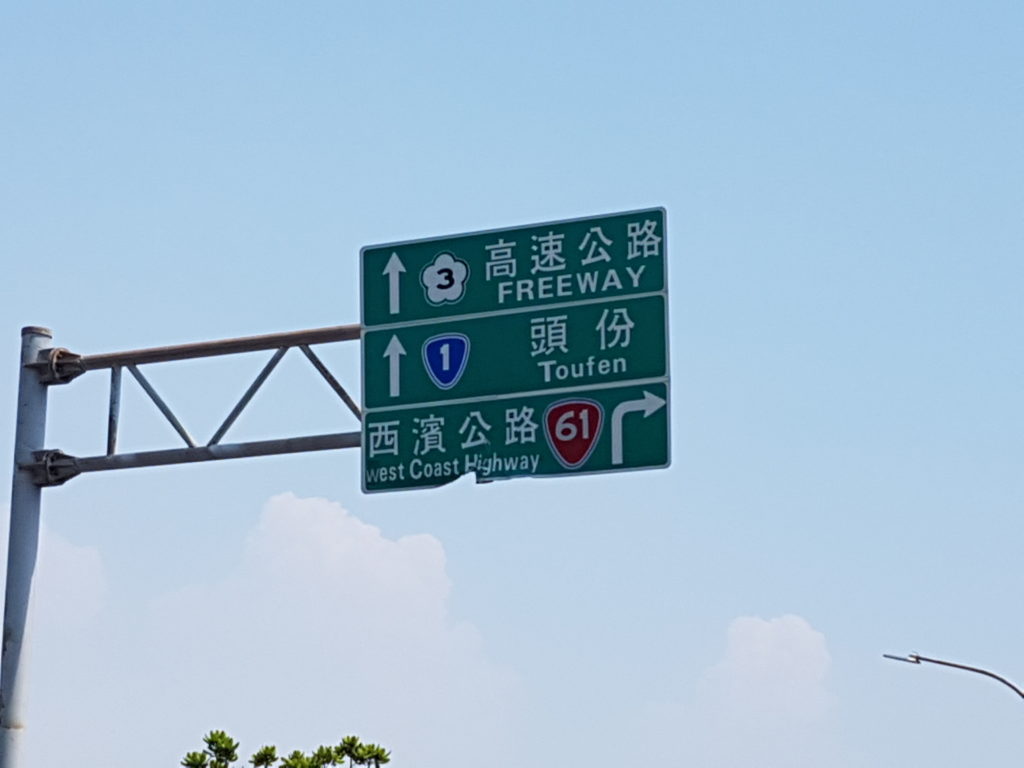
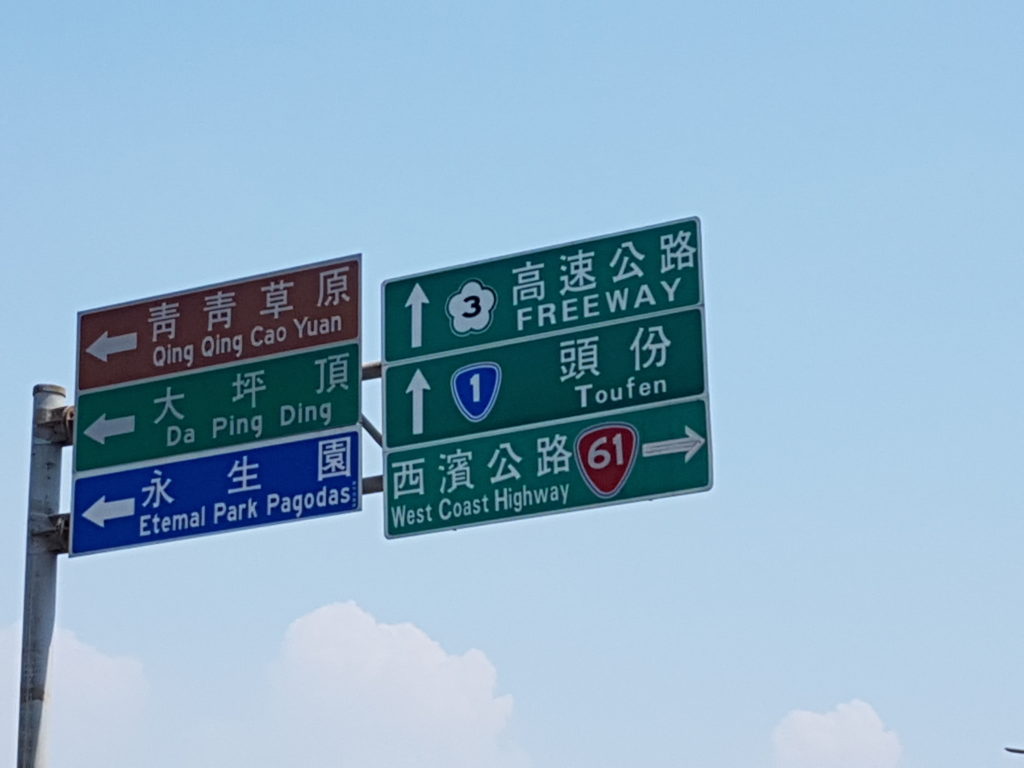
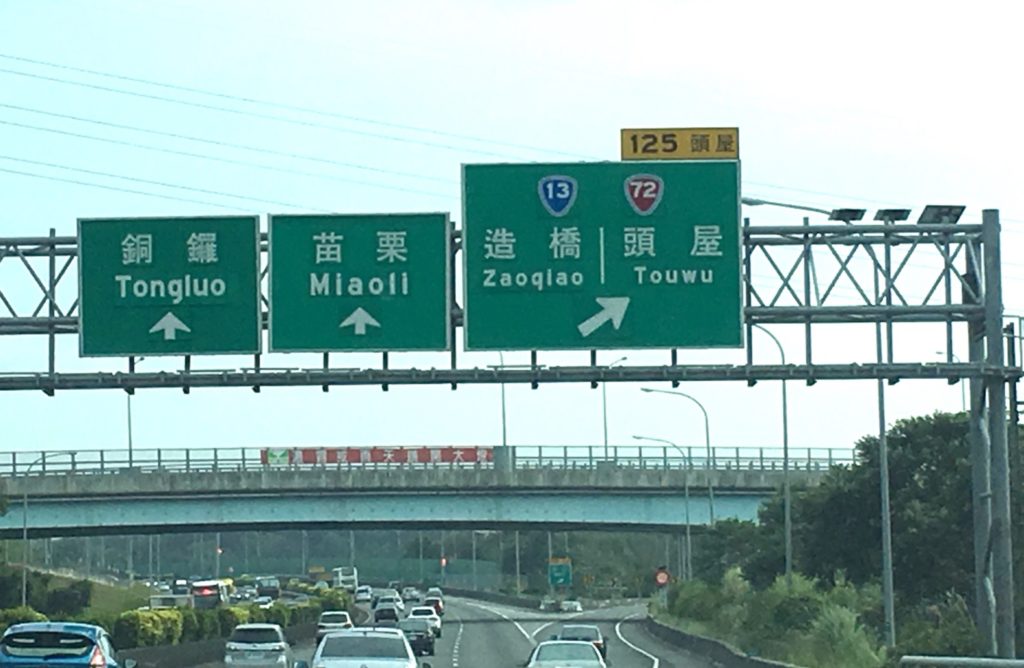
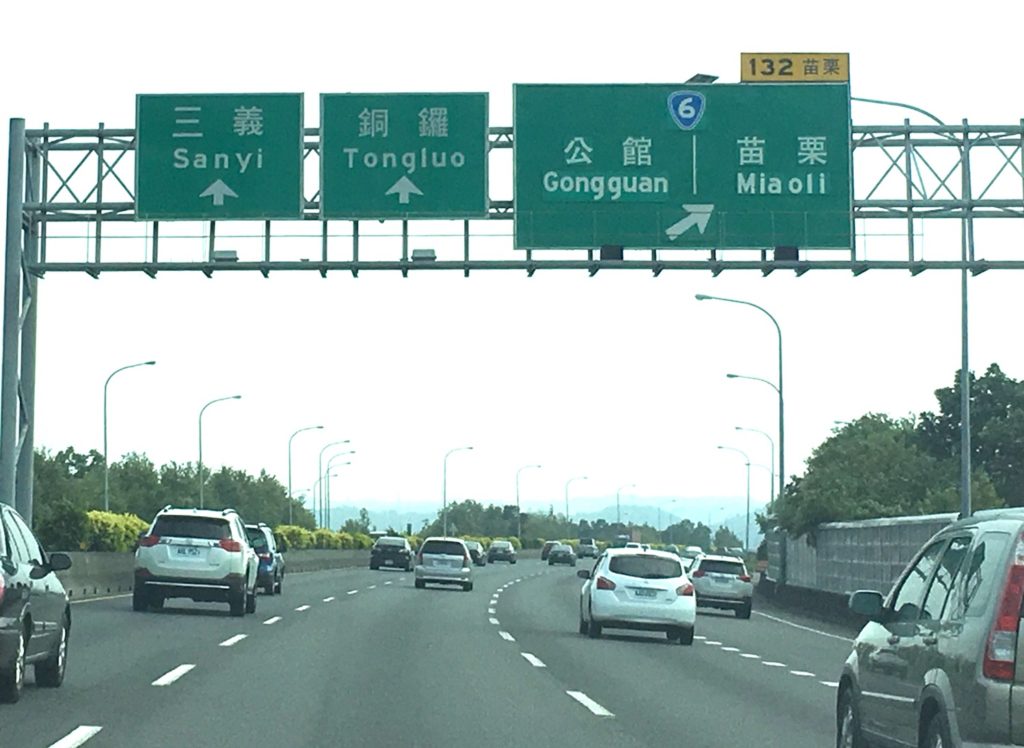
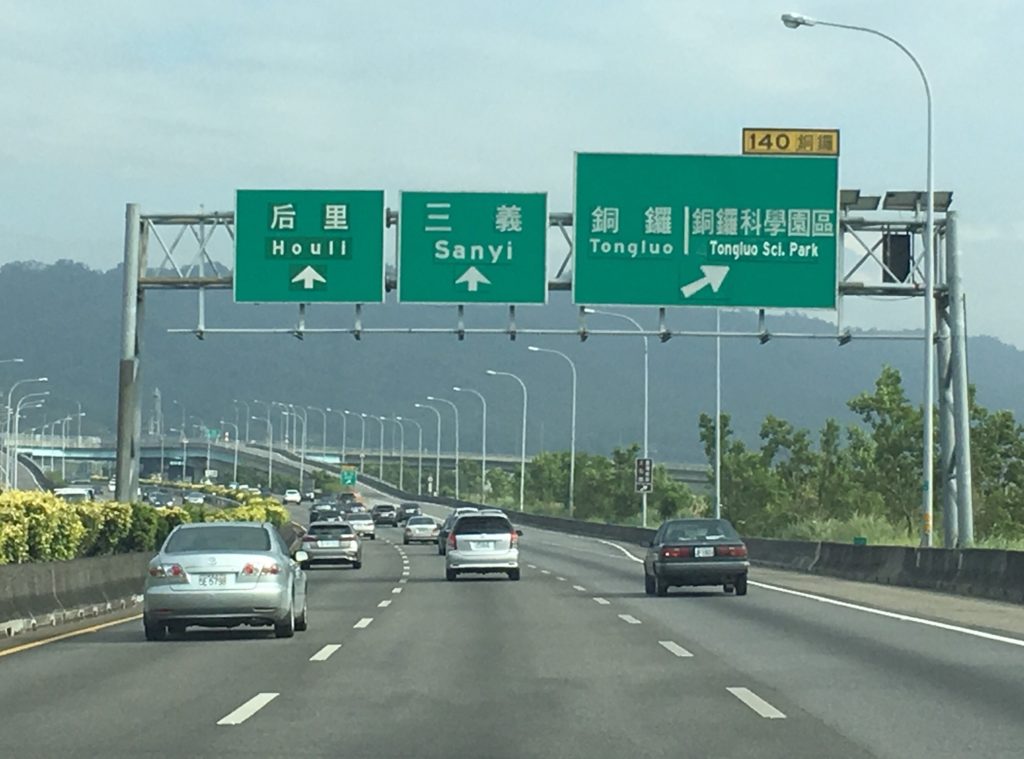
2 Pingbacks